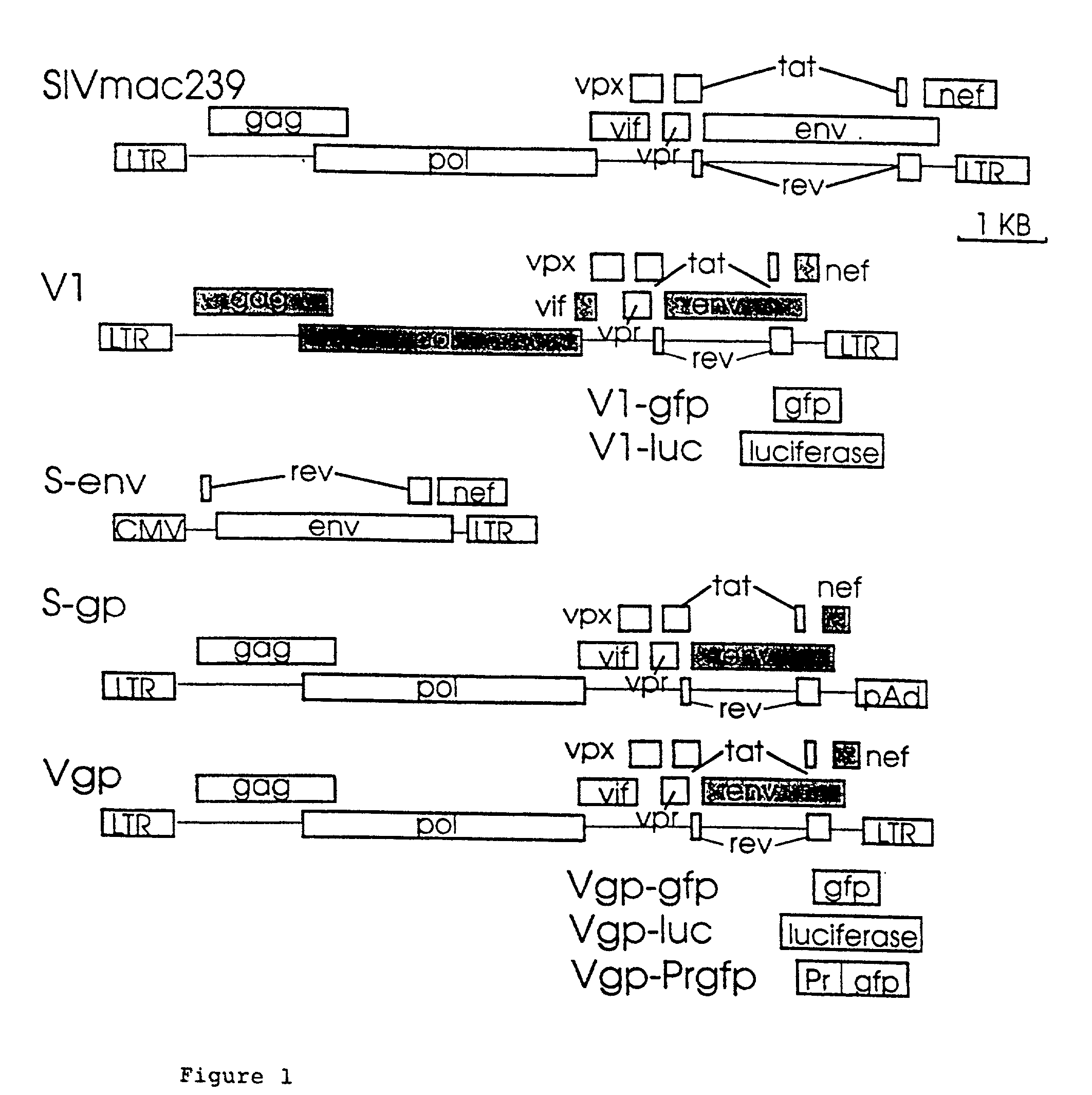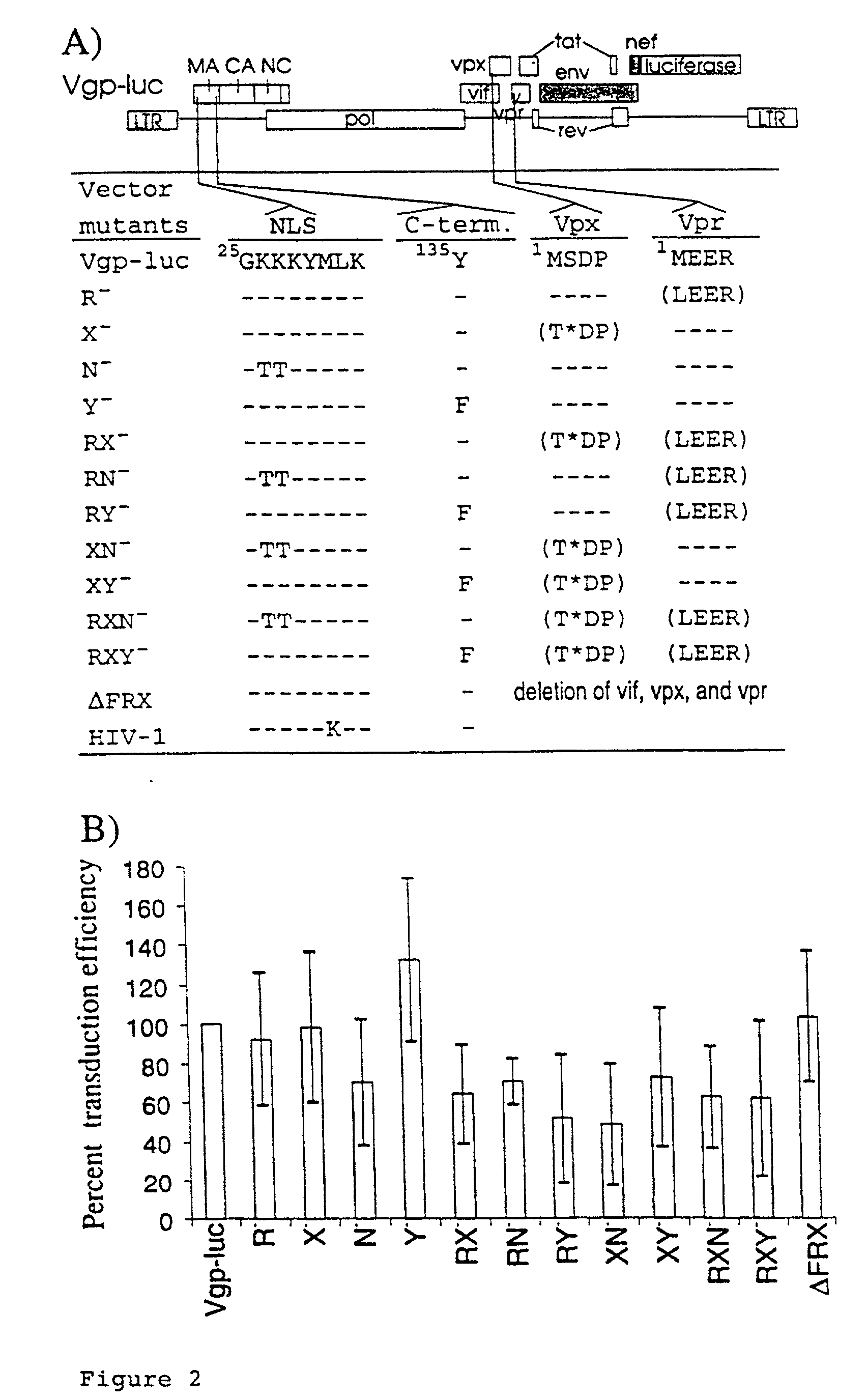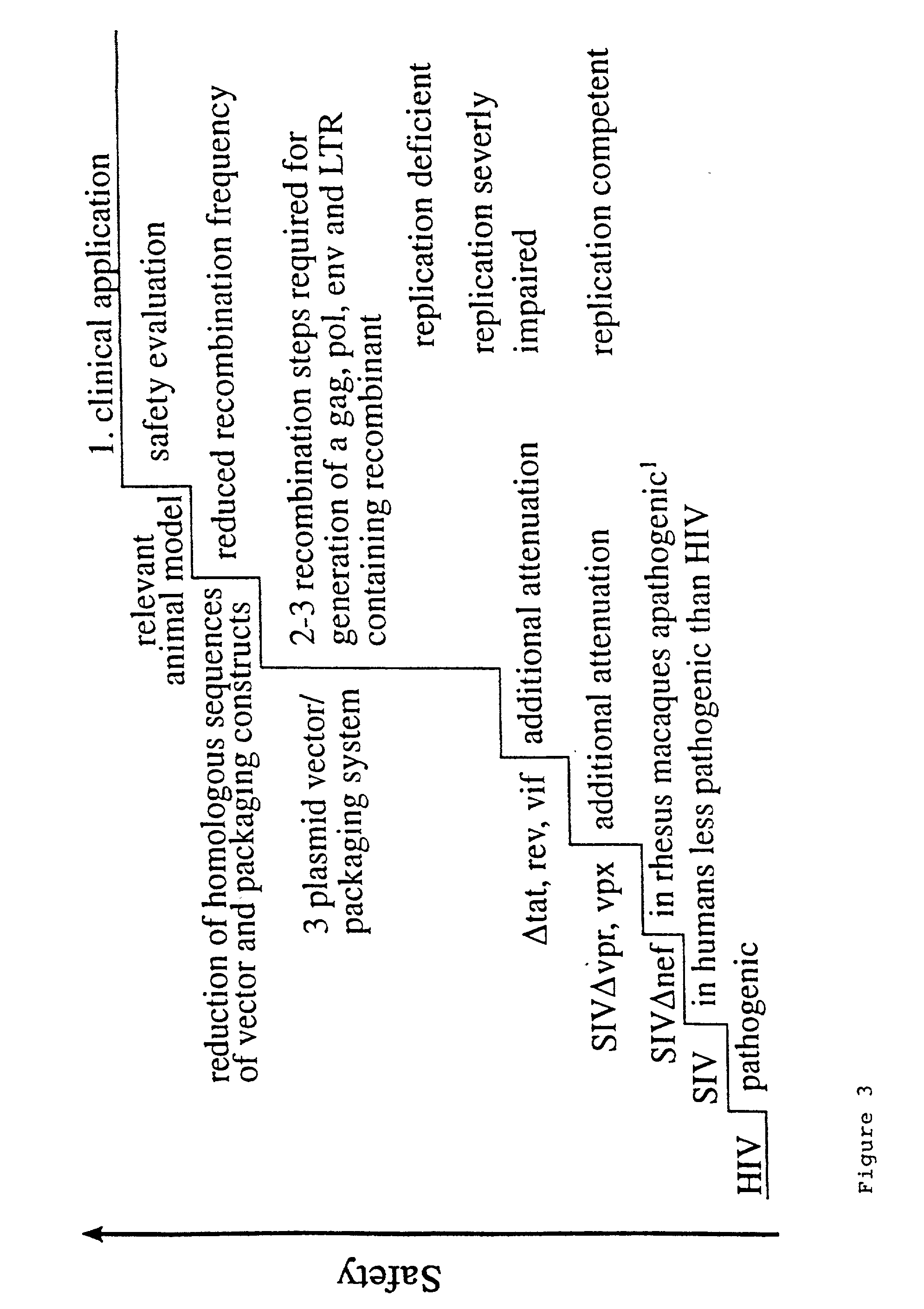Lentivirus based vector and vector system
a vector system and vector technology, applied in the direction of sugar derivatives, biocide, plant growth regulators, etc., can solve the problems of limiting the range of target cells, preventing efficient in vivo gene therapy, fraction of possible applications of gene therapy, etc., to achieve efficient gene transfer, expand the spectrum of target cells, and efficiently in
- Summary
- Abstract
- Description
- Claims
- Application Information
AI Technical Summary
Benefits of technology
Problems solved by technology
Method used
Image
Examples
Embodiment Construction
[0043] Transfection and Infection
[0044] 293T cells (293ts / A1609) (6) were obtained from ATCC and transfected with the calcium phosphate coprecipitation method as described (33). Transfection efficiency was determined by measuring the reverse transcriptase acitivity in the supernatant of transfected cells as described previously (18,29). CEMx174 cells were cultured in RPMI 1640 supplemented with 10% fetal calf serum, penicillin, streptomycin and glutamine. To block cell division, CEMx174 cells were .gamma.-irradiated with 4000 rad.
[0045] 1.times.10.sup.5 CEMx174 cells or 3.times.10.sup.5 irradiated CEMx174 cells were incubated for two hours with 150 .mu.l and 450 .mu.l vector supernatant, respectively. Cells were cultured for additional 48 hours after adding 1 ml medium. Luciferase activity was determined with the luciferase assay system (Promega, Madison, Wis.) as described by the manufacturer. The protein concentration of the cell extracts was determined by the Bio-Rad (Munchen, Ge...
PUM
| Property | Measurement | Unit |
|---|---|---|
| pharmaceutical composition | aaaaa | aaaaa |
| concentration | aaaaa | aaaaa |
| density | aaaaa | aaaaa |
Abstract
Description
Claims
Application Information
 Login to View More
Login to View More - R&D
- Intellectual Property
- Life Sciences
- Materials
- Tech Scout
- Unparalleled Data Quality
- Higher Quality Content
- 60% Fewer Hallucinations
Browse by: Latest US Patents, China's latest patents, Technical Efficacy Thesaurus, Application Domain, Technology Topic, Popular Technical Reports.
© 2025 PatSnap. All rights reserved.Legal|Privacy policy|Modern Slavery Act Transparency Statement|Sitemap|About US| Contact US: help@patsnap.com



